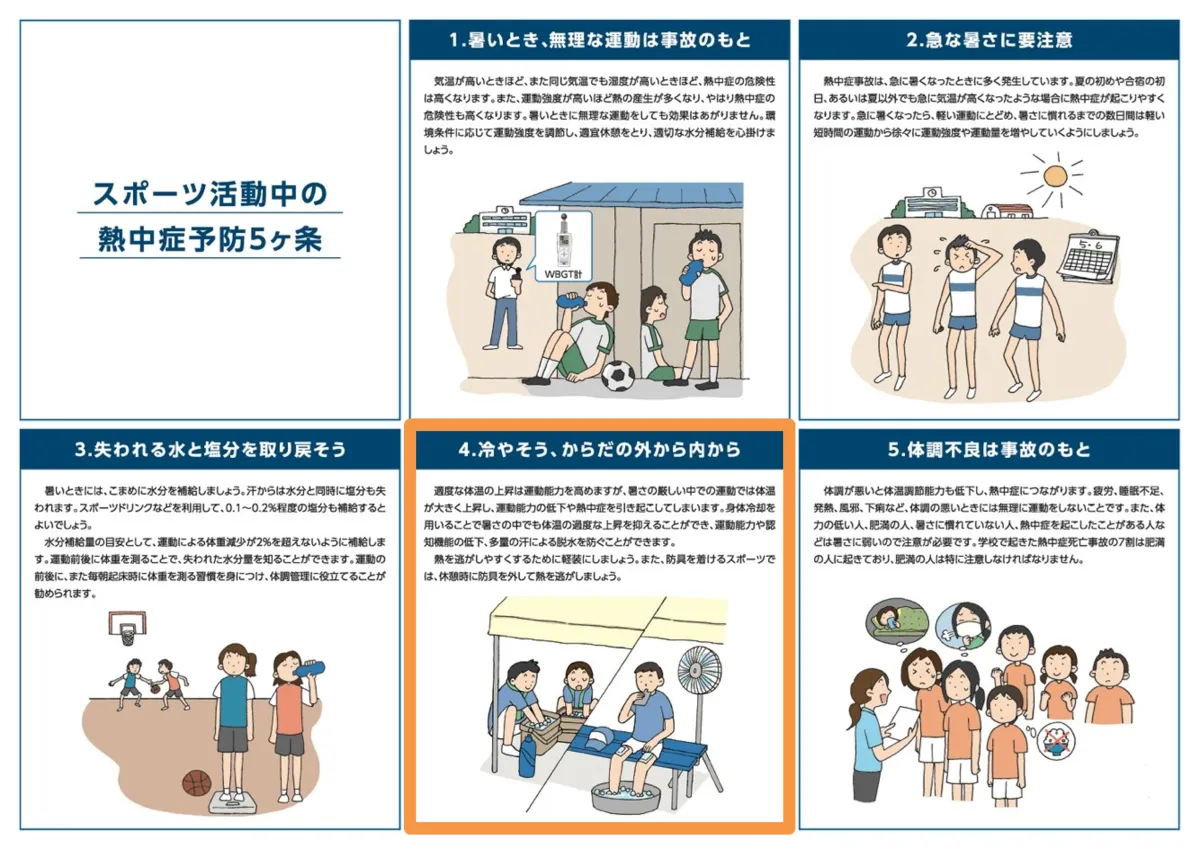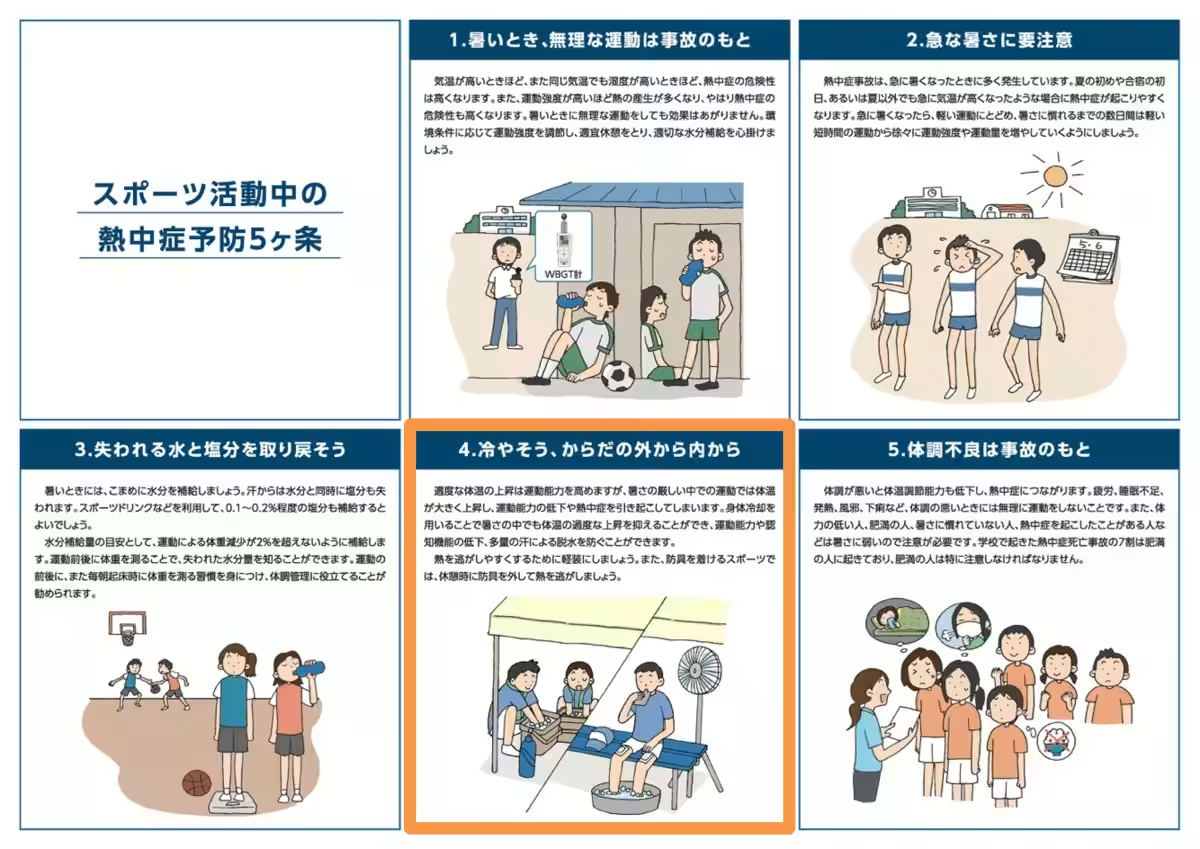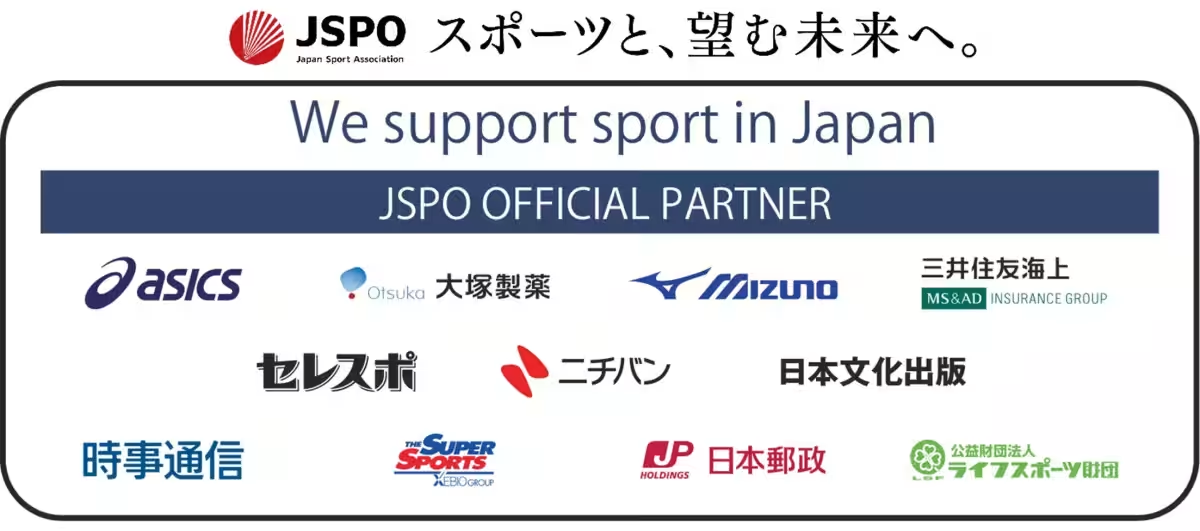

Revised Guidelines for Preventing Heatstroke During Sports Activities
Revised Guidelines for Preventing Heatstroke During Sports Activities
The Japan Sports Association (JSPO), based in Shinjuku, Tokyo, has taken proactive steps to ensure the safety of athletes by updating its guidelines on preventing heatstroke during sports activities. In collaboration with Otsuka Pharmaceutical Co., JSPO supports the dissemination of vital information, advocacy efforts, and research to combat the rising incidents of heat-related issues in sports.
In its latest revision, the JSPO has added a new point regarding 'body cooling during sports activities' to its previously established 'Five Key Guidelines for Preventing Heatstroke.' This update reflects a growing recognition of the importance of effective cooling techniques to mitigate the risk of heatstroke among athletes.
The Five Key Guidelines for Preventing Heatstroke - Updated
The original guideline stipulating:
- - 4. Dress Lightly for Comfort
- - 4. Cool Your Body Externally and Internally
This change, set to be published in the upcoming sixth edition of the 'Heatstroke Prevention Guidebook,' highlights the necessity for practical and actionable measures to ensure athletes remain safe during intense physical activity, especially in high temperatures.
Intent Behind the Revision
Research Leader Takashi Kawahara has emphasized that while the principles of heatstroke prevention have been well established, the challenge lies in how these principles are effectively implemented in sports settings. Recent studies have shown that techniques for cooling the body during sports are gaining recognition for their effectiveness in preventing heat-related illnesses. However, these practices have not yet been adequately integrated into the sports community.
The decision to incorporate body cooling into the core guidelines stems from the belief that such measures are crucial to enhancing safety. Sports coaches and instructors are encouraged to apply these updated guidelines actively in their routines and decision-making processes to ensure the well-being of all participants.
Kawahara has also underscored the collective responsibility to prevent heatstroke incidents in sports and emphasized that the JSPO will continue to advocate for awareness and education surrounding heatstroke prevention efforts.
Seeking a Safe Sports Environment
The JSPO's ongoing commitment involves not only advocating for better practices but also engaging in active research and education. By disseminating relevant information and updates, the organization aims to reduce the risk of heatstroke incidents in various sports activities, ranging from school sports to community programs.
Additional Resources
For more information, JSPO directs individuals to several resources:
- - JSPO Heatstroke Prevention Page
- - The updated Heatstroke Prevention Guidebook (sixth edition expected to be published around June 20, 2025)
- - Details regarding the 'Heatstroke Prevention Forum' scheduled for June 28, 2025, which will cover the latest research and case studies related to heatstroke prevention.
JSPO aims to foster a safer sporting environment by integrating the latest scientific findings and safety practices in the field of sports. By addressing heatstroke proactively, they support not just athletes but also coaches and sports organizations in ensuring safety for all involved in sports activities.
About JSPO
Founded in 1911, the Japan Sports Association (JSPO) has evolved from the Great Japan Athletic Association to its current form, focusing on a wide range of activities to promote national sports participation and enhance competitive performance internationally. From organizing sports events for various generations to fostering environments for physical activity, JSPO plays a pivotal role in Japan's sports ecosystem. For more details, visit JSPO Official Website.



Topics Sports)










【About Using Articles】
You can freely use the title and article content by linking to the page where the article is posted.
※ Images cannot be used.
【About Links】
Links are free to use.